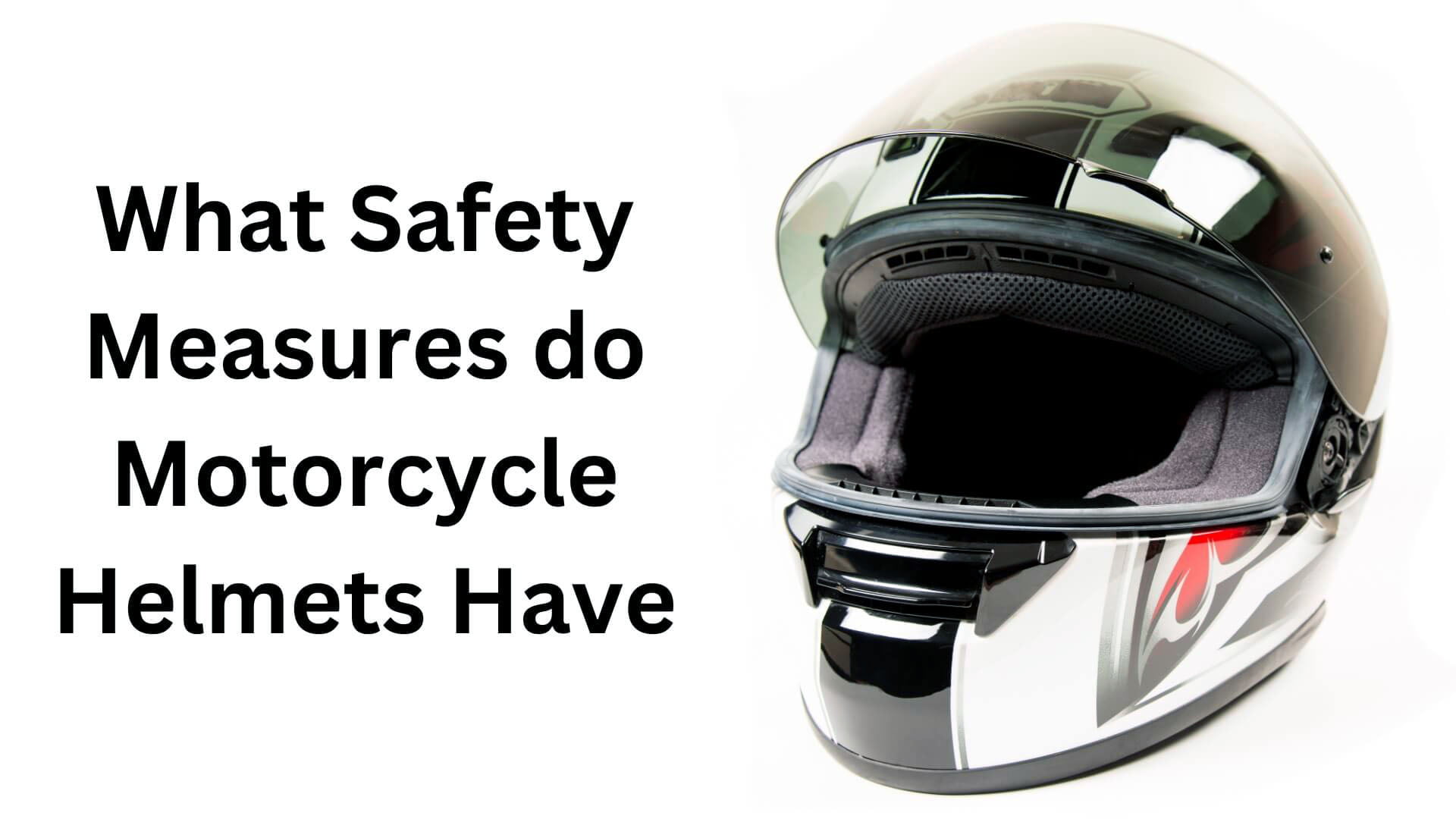How to Clean Bike Helmet? Step By Step Instructions.

As a bike rider, you rely on your helmet to protect your head in the event of a crash. It is essential to keep your helmet in top condition to ensure that it will perform as intended in the case of an accident.
Cleaning your helmet regularly is not only essential for hygiene, but it also helps to maintain the life and quality of the helmet.
In this post, we’ll go over the steps you need to take to clean your bike helmet properly, including what materials you’ll need and what to avoid.
Materials Needed
- Soap and water
- Soft cloth or sponge
- Bucket or sink
- Optionally, specialized helmet cleaning solutions or mild detergents
- Vinegar or baking soda
- A toothbrush or soft-bristled brush
- Rag or paper towels
- Optional: air dryer or clean, dry cloth
These materials can be used to effectively clean and maintain the life and quality of a bike helmet. Riders can remove dirt and grime from the helmet’s surface using soap and water, a soft cloth or sponge, and a bucket or sink.
Specialized helmet cleaning solutions or mild detergents can be used for more stubborn stains, and white vinegar or baking soda can be used as a natural cleaning solution.
A toothbrush or soft-bristled brush can reach small, hard-to-clean areas, while a rag or paper towel can dry the helmet after cleaning.
An air dryer or clean cloth can speed up the drying process. With these materials, riders can keep their helmets clean and in good condition, ensuring maximum protection, comfort, and longevity.
Read More: Pick a Bike Helmet Easily.
What is the Importance of Keeping Bike Helmets Clean?

Keeping a bike helmet clean is essential for several reasons:
- Hygiene: A dirty helmet can harbor bacteria, germs, and other pollutants that can harm your health. Cleaning your helmet regularly helps prevent these contaminants’ buildup and maintain hygiene.
- Performance: Dirt, grime, and sweat can affect the helmet’s ability to do its job in the event of an accident. Over time, these substances can weaken the helmet’s materials and reduce its protective qualities.
- Longevity: Regular cleaning can help extend your helmet’s life by removing harmful substances that can cause deterioration over time. Keeping the helmet clean also helps to maintain its appearance and overall quality.
- Safety: A clean helmet provides a clear field of vision, which is critical when riding a bike. A dirty helmet can obstruct your view and make it more difficult to see obstacles in your path, increasing the risk of an accident.
In summary, keeping a bike helmet clean is crucial for maintaining hygiene, preserving its protective qualities, extending its life, and ensuring safety while riding.
Read More: How to Recycle Bicycle Helmets?
Importance of Maintaining the Life and Quality of the Helmet
Maintaining the life and quality of a bike helmet is essential for several reasons:
- Protection: A helmet is critical safety equipment that helps protect the head and brain in a crash. Maintaining the life and quality of the helmet ensures that it will perform as intended in the case of an accident, providing maximum protection to the rider.
- Longevity: Regular maintenance and cleaning of the helmet can help to extend its lifespan. Dirt, grime, and sweat can weaken the helmet’s materials over time, reducing its protective qualities. By keeping the helmet clean and well-maintained, riders can ensure that it will last for as long as possible.
- Comfort: A well-maintained helmet should fit comfortably and be free from odors or irritants. Regular cleaning of the interior padding and helmet shell can help to maintain a comfortable and hygienic fit.
- Cost-effectiveness: A helmet is a significant investment, and maintaining its life and quality can help make it more cost-effective. By extending the helmet’s life, riders can avoid purchasing a new helmet prematurely, saving money in the long run.
- Appearance: A well-maintained helmet not only performs better, but it also looks better. Regular cleaning and maintenance can help preserve the helmet’s appearance, keeping it looking new for longer.
In conclusion, maintaining the life and quality of a bike helmet is essential for ensuring maximum protection, longevity, comfort, cost-effectiveness, and appearance.
Regular cleaning and maintenance are critical for preserving the life and quality of the helmet and ensuring that it is always ready to protect the rider in the event of a crash.
Read More: How Often Should You Replace Your Bike Helmet?
Preparation Steps Involved in Cleaning a Bike Helmet:
Here’s an explanation of the preparation steps involved in cleaning a bike helmet:
Step 1: Removing the interior padding
Before cleaning the helmet, it is recommended to remove the interior padding to clean it separately. This allows for more thorough cleaning and helps to preserve the life of the interior padding. To remove the interior padding, follow the manufacturer’s instructions or refer to the user manual.
Step 2: Cleaning the interior padding
The interior padding can be cleaned by hand-washing it with soap and water or by machine-washing it on a gentle cycle.
Avoid harsh detergents or bleach, as these can damage the padding material. Once washed, allow the padding to air-dry completely before reassembling the helmet.
Step 3: Preparing the Exterior Surface
To prepare the exterior surface for cleaning, remove any loose dirt or debris by gently brushing it off with a soft cloth or sponge. Rinse the helmet with clean water to remove any remaining dirt.
If necessary, prepare a cleaning solution by mixing soap and water, or a specialized helmet-cleaning solution, in a bucket or sink. Dip a soft cloth or sponge into the solution, then wring out excess water before using it to scrub the helmet’s exterior surface gently.
Following these preparation steps, riders can ensure that their helmets are thoroughly cleaned and well-maintained, providing maximum protection, comfort, and longevity.
Read More: How Thick is a Bike Helmet?
How to Clean the Exterior Surface
Here’s an explanation of how to clean the exterior surface of a bike helmet:
● Cleaning with soap and water:
To clean the helmet’s exterior surface with soap and water, follow these steps:
- Prepare a cleaning solution by mixing soap and water in a bucket or sink.
- Dip a soft cloth or sponge into the solution, then wring out excess water before using it to scrub the helmet’s exterior surface gently.
- Rinse the helmet with clean water to remove any remaining soap residue.
- Dry the helmet with a clean, dry cloth or air dryer.
● Cleaning with specialized solutions:
Specialized helmet cleaning solutions can clean and deodorize the helmet effectively. Follow the manufacturer’s instructions when using these solutions, and avoid using harsh chemicals that can damage the helmet’s materials.
● Avoiding specific cleaning agents:
It is essential to avoid using specific cleaning agents when cleaning a bike helmet. These include harsh chemicals such as bleach or abrasive cleaning products, which can weaken the helmet’s materials and reduce its protective qualities.
Avoid exposing the helmet to high heat or direct sunlight, as this can cause damage or discoloration to the helmet’s materials.
By following these cleaning steps and avoiding specific cleaning agents, riders can effectively clean and maintain the life and quality of their bike helmets, providing maximum protection, comfort, and longevity.
Read More: Do Bike Helmets Expire?
How to Reassemble the helmet?

Here’s an explanation of how to reassemble a bike helmet after cleaning:
1. Putting the interior padding back in:
Once the interior padding has been cleaned and is completely dry, it is time to reassemble the helmet. Carefully follow the manufacturer’s instructions or refer to the user manual for specific instructions on reattaching the helmet’s interior padding.
2. Adjusting the straps and fit:
After reattaching the interior padding, it is essential to adjust the straps and fit of the helmet to ensure maximum comfort and protection. Adjust the chin strap to fit comfortably under the chin, and make sure the side straps form a “V” shape under and in front of the ears. The helmet should fit snugly and comfortably on the head, with no spaces between the head and the helmet.
Read More: How to Clean Bike Helmet Straps?
3. Testing the helmet:
Once the helmet has been reassembled, it is essential to test the fit and adjust it as necessary. Shake your head gently from side to side and up and down to ensure that the helmet stays secure. Readjust the straps and try again if the helmet moves or feels loose. Repeat the testing process until the helmet fits snugly and comfortably, providing maximum protection and comfort.
Following these reassembling steps, riders can ensure that their helmets are properly reassembled, providing maximum protection, comfort, and longevity.
How to Maintenance and Storage a Clean Bike Helmet
Here’s an explanation of how to maintain and store a clean bike helmet:
● Regular cleaning schedule:
To maintain the life and quality of a bike helmet, it is essential to follow a regular cleaning schedule. Clean the helmet after each use to remove dirt, sweat, and bacteria at least once a month to ensure that it remains fresh and hygienic.
● Storing the helmet correctly:
When not in use, store the helmet in a cool, dry place away from direct sunlight and heat. Avoid storing the helmet in a damp or humid environment, as this can cause damage or mold growth. It is also essential to avoid exposing the helmet to harsh chemicals or solvents, as these can weaken the helmet’s materials and reduce its protective qualities.
● Replacing the helmet after a crash:
If a helmet has been involved in a crash, it is crucial to replace it immediately, even if there is no visible damage. The helmet may have suffered structural damage that could reduce its protective qualities, and the internal padding may have absorbed sweat, dirt, or bacteria that could compromise the helmet’s hygiene. Replacing the helmet after a crash can ensure that they are protected and comfortable while riding.
Following these maintenance and storage steps, riders can effectively maintain and store their bike helmets, providing maximum protection, comfort, and longevity.
What are the Pros and Cons of Cleaning Bike Helmets?
Pros of Cleaning Bike Helmets:
- Improved hygiene: Regular cleaning of a bike helmet helps to remove dirt, sweat, and bacteria, improving the hygiene of the helmet and reducing the risk of skin irritation or infection.
- Enhanced protection: Cleaning a bike helmet helps to ensure that it remains in good condition, providing maximum protection in the event of a crash.
- Increased comfort: Cleaning a bike helmet can improve the comfort of wearing it, as sweat, dirt, and bacteria can cause discomfort and unpleasant odors.
- Extended lifespan: Regular cleaning and maintenance of a bike helmet can help to extend its lifespan, allowing riders to use it for longer periods.
Cons of Cleaning Bike Helmets:
- Time consumption: Cleaning a bike helmet can be time-consuming, especially if the interior padding needs to be removed and cleaned.
- Risk of damage: Incorrect cleaning techniques or harsh cleaning agents can damage the helmet’s materials, reducing its protective qualities.
- Cost: If specialized cleaning solutions or mild detergents are used, there can be additional costs involved in the cleaning process.
Overall, the benefits of cleaning a bike helmet far outweigh the potential drawbacks, making it an essential aspect of helmet maintenance and hygiene.
By following the guidelines for cleaning and maintaining a bike helmet, riders can enjoy the benefits of a clean, hygienic, and well-protected helmet.
FAQS Questions About How to Clean Your Bike Helmet
What materials are needed to clean a bike helmet?
The materials needed to clean a bike helmet include soap and water, a soft cloth or sponge, a bucket or sink, and, optionally, specialized helmet-cleaning solutions or mild detergents.
How often should I clean my bike helmet?
It is recommended to clean your bike helmet regularly, at least once every few months, or more frequently if you use it regularly or if the helmet becomes noticeably dirty.
Can I use household cleaning products to clean my bike helmet?
A: It is best to avoid using harsh or abrasive household cleaning products, as they can damage the helmet’s materials and reduce its protective qualities. Use soap and water or specialized helmet cleaning solutions specifically designed for cleaning bike helmets.
How do I remove the interior padding from my bike helmet?
The interior padding can usually be removed by pulling it gently from the helmet. Be sure to check the manufacturer’s instructions for specific instructions on how to remove the interior padding.
Can I clean my bike helmet in the washing machine?
No, putting your bike helmet in the washing machine is not recommended, as the agitation and heat can damage the helmet’s materials and reduce its protective qualities.
How do I reassemble my bike helmet after cleaning it?
After cleaning the helmet and allowing it to dry, replace the interior padding and adjust the straps to ensure a secure and comfortable fit. Test the helmet by gently shaking it to ensure it is securely attached.
What should I do if my bike helmet is damaged in a crash?
If your bike helmet is damaged in a crash, it is recommended to replace it immediately, even if there is no visible damage. The impact of a crash can weaken the helmet’s materials, reducing its protective qualities.
Final Fate
In conclusion, keeping a bike helmet clean is essential for safety and health reasons. Here is a summary of the cleaning process, final thoughts and recommendations, and encouragement to prioritize helmet hygiene:
Summary of the cleaning process:
Cleaning a bike helmet involves removing the interior padding, cleaning the interior and exterior surfaces, and reassembling the helmet.
The exterior surface can be cleaned using soap and water or specialized solutions, and it is essential to avoid using specific cleaning agents that could damage the helmet’s materials.
The interior padding should be cleaned and allowed to dry entirely before being reattached to the helmet.
Final thoughts and recommendations:
Maintaining a regular cleaning schedule and storing the helmet correctly is essential to ensure maximum protection, comfort, and longevity.
After a crash, it is recommended to replace the helmet immediately, even if there is no visible damage. Proper helmet hygiene is essential for ensuring riders’ safety and health while on the road.
Encouragement to prioritize helmet hygiene for safety and health reasons:
In conclusion, riders are encouraged to prioritize helmet hygiene for safety and health. Regular cleaning and maintenance of the helmet can ensure that it remains in good condition and provides maximum protection, comfort, and longevity.
By following these guidelines, riders can confidently enjoy their rides, knowing that their helmets are clean, hygienic, and ready to protect them in the event of a crash.

Hey, I’m Hrithik Hossain. I am the head of helmethacks.com, which specializes in safety helmets. I am looking to connect with anyone interested in purchasing a helmet or who has any questions about different types of helmets. I have over 8 years of experience as a helmet expert, and I can’t wait to help you find the perfect helmet for you. I can help you with any questions regarding helmets, from the best brands to fitting, style, and more! I really enjoy keeping people safe by ensuring they have the best protection possible.







